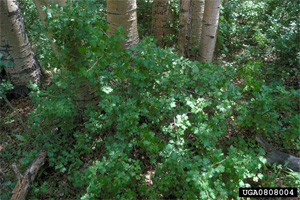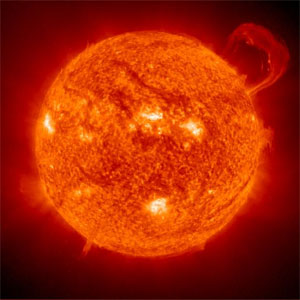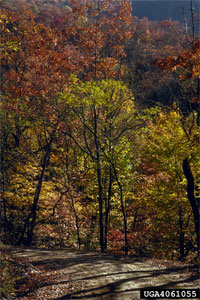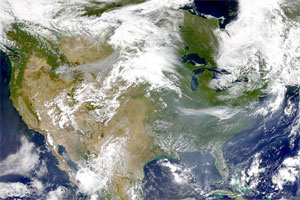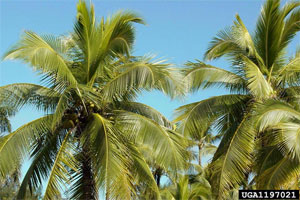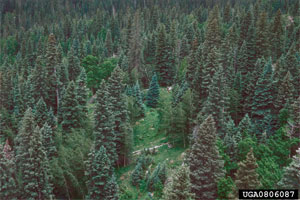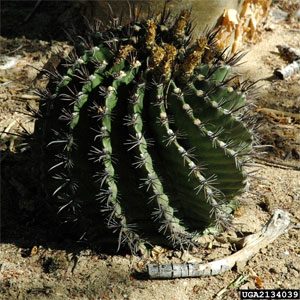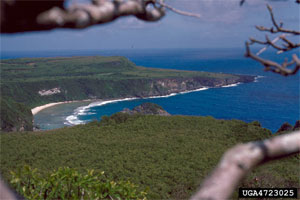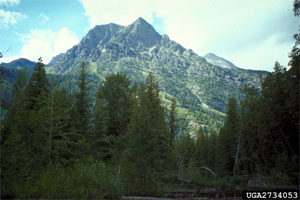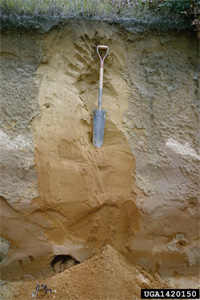|
The distribution of water across the earth directly influences both the climate and biota at the micro and macro scales.
Water is mainly stored in the oceans and the atmosphere, with streams, lakes, ground water and plants holding the rest.
The water cycle is the process which transfers water between these components.
As we already mentioned, the atmosphere stores large amounts of water.
This water is typically stored in the form of vapor and is commonly referred to as
humidity.
The temperature of air dictates the amount of water it can hold.
The water holding capacity of air increases as temperature increases.
The relative humidity is the percentage of water vapor present in the air compared to the amount of water the air could actually hold.
Water enters the ecosystem from the atmosphere in the form of precipitation.
Precipitation occurs when a humid air mass cools and it loses its water holding capacity.
This process generally begins with the formation of clouds, which are very small drops of water which remain suspended in the air.
As these drops grow larger, they become too heavy to remain suspended in the air and they fall to the ground as precipitation.
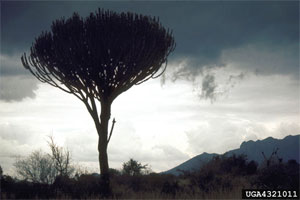
Kenneth M. Gale, www.forestryimages.org
The cooling air masses which cause precipitation can be formed in several different ways, however in all cases the air is lifted to higher altitudes and cooled.
Lifting may occur due to the lower parts of an air mass being heated at the surface and rising until clouds form and then precipitation, or a faster moving air mass may push under another air mass in front of it forcing it to rise in elevation.
Another cause of rising air masses is through orographic lifting.
This occurs when a mass of air is forced to gain elevation due to an obstacle.
For example, a mountain range will force an air mass to rise to pass over it.
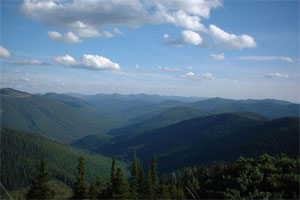
Steven Steele, , www.forestryimages.org
Once water has fallen to the earth’s surface it can either evaporate back to the atmosphere, be absorbed by the soil or roots of plants or it can become ground water. Water is also released back to the atmosphere through the stomata of plants.
This process is called transpiration. The combination of evaporation and transpiration account for almost 70 percent of the water returned to the atmosphere.
These two processes together are referred to as evapotranspiration.
The relative importance of the causes of precipitation vary
temporally, regionally and locally, and the amounts of water
evaporated and transpired back to the atmosphere vary with humidity,
soil properties and amount of soil water. A complete review of the
hydrological cycle is well beyond the scope of this web module.
The influence of precipitation on ecosystems is very important as we have already mentioned. In general, forested ecosystems occur where precipitation exceeds transpiration.
In areas where this does not occur, we typically find grasslands or deserts.
Additional Information:
Water Cycle
Hydrological Cycle
|
